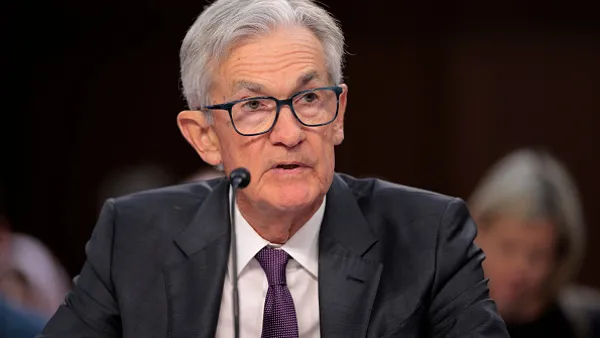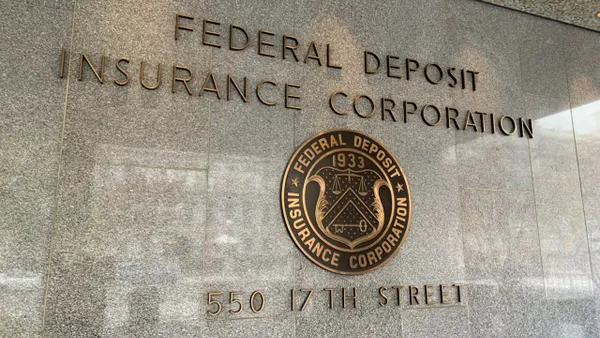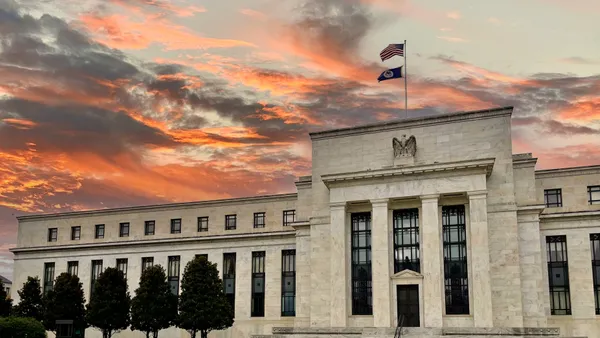UPDATE: Feb. 10, 2022: Wells Fargo set a March 14 office-return date for customer-facing employees and those in enterprise functions, regardless of their vaccination status, Chief Operating Officer Scott Powell said Wednesday in a memo seen by Bloomberg.
The bank will adopt a “hybrid flexible model,” which will send most employees to the office three days a week, Powell told the wire service.
“When we start returning to the office, it’s going to be a lot of flexibility — way more flexibility than we had before the pandemic,” Powell said. “We will adapt the model as we go forward, as we know more.”
Wells Fargo gave up declaring concrete return dates in December. The bank had initially planned a September return to office, which was pushed back five times as COVID-19 cases swelled amid waves of delta and omicron variants.
Contact-center employees, as well as those in operations, will return later, the bank said.
Wells Fargo’s policy appears to be not nearly as strict as that of some banks, notably Citi. Wells encourages vaccination but doesn't require it. Vaccinated employees are permitted not to wear a mask if local restrictions allow it. But unvaccinated workers must wear a mask at all times and take COVID-19 tests routinely. Customer-facing retail employees must wear a mask regardless of vaccination status.
Wells Fargo has let some vaccinated staff return to the office voluntarily, and some business meetings, travel and client visits have resumed, the memo indicated.
--------
Wells Fargo on Tuesday became the largest U.S. bank to indefinitely postpone its office-return plan, according to a statement seen by Bloomberg and Reuters.
Employees will receive further details on the bank’s plans in 2022, the statement said.
Tuesday’s move marks the fifth delay since August to Wells Fargo’s timeline for large-scale office reopening. The bank in September set a Jan. 10 mandatory return date for employees supporting business lines, among others.
Over the past week, Wells Fargo’s three larger rivals — Bank of America, JPMorgan Chase and Citi — have each told their New York City-area-based employees to work from home for the rest of the year if their roles and/or managers allow it. Those directives come as the omicron variant emerges as COVID-19’s dominant form.
Wells’ delays began as a previous variant, delta, sparked a spike in infection rates. Chief Operating Officer Scott Powell in July laid out a two-wave strategy ahead of a planned Sept. 6 return. That date was pushed to Oct. 4, Oct. 18, Nov. 1 and eventually into 2022.
“We are continuing to closely monitor the environment with the health and wellbeing of our employees as our priority,” the bank said in Tuesday’s statement. “We look forward to fully returning our teams back to the office.”
The San Francisco-based lender is not alone in giving up on setting a new target date. Capital One in October said it would give employees 30 days’ notice before the decision to reopen is made sometime in 2022.
"It has been 574 days since Capital One first closed its U.S. offices," the McLean, Virginia-based bank wrote Oct. 7. "Sustained progress to contain and reduce the impacts of COVID-19 in the United States has been elusive. Eighteen months into this pandemic, this virus continues to surprise and frustrate humanity.”
Like Wells did on a previous timeline delay, TD tabled the idea of a 2021 return in September. Kenn Lalonde, TD's chief human resources officer, told employees at the time that the bank didn’t “currently expect a broader return to TD locations before calendar 2022.” He didn’t, however, specify a date.
“We are monitoring the evolving situation and will update you when we have new information to share,” Lalonde said.
As for Wells, employees who have been vaccinated against COVID-19 may work from the bank’s locations if they choose. About 100,000 of the bank’s 254,000 employees have done so throughout the pandemic, according to Reuters.











